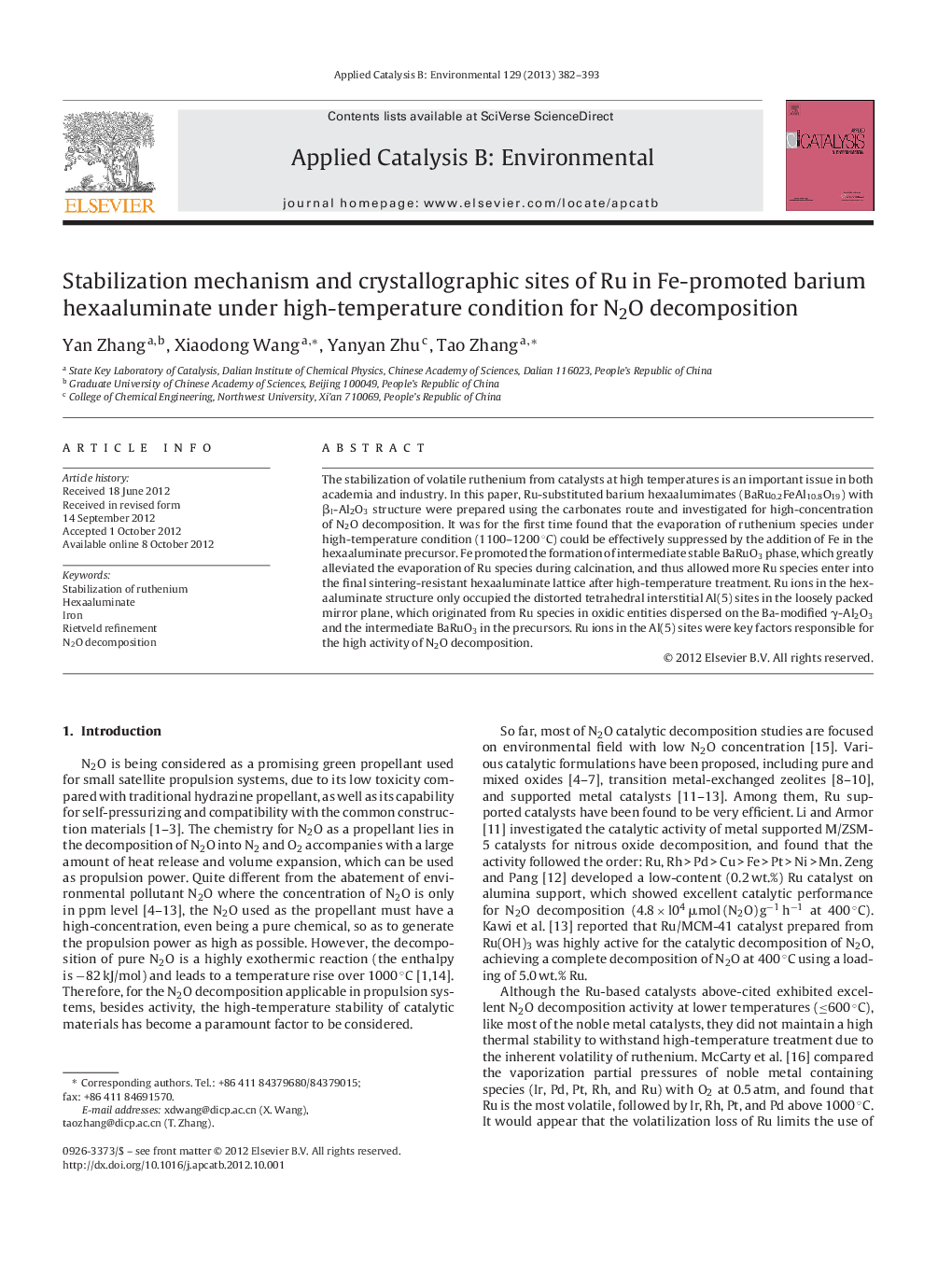| Article ID | Journal | Published Year | Pages | File Type |
|---|---|---|---|---|
| 46020 | Applied Catalysis B: Environmental | 2013 | 12 Pages |
The stabilization of volatile ruthenium from catalysts at high temperatures is an important issue in both academia and industry. In this paper, Ru-substituted barium hexaalumimates (BaRu0.2FeAl10.8O19) with βI-Al2O3 structure were prepared using the carbonates route and investigated for high-concentration of N2O decomposition. It was for the first time found that the evaporation of ruthenium species under high-temperature condition (1100–1200 °C) could be effectively suppressed by the addition of Fe in the hexaaluminate precursor. Fe promoted the formation of intermediate stable BaRuO3 phase, which greatly alleviated the evaporation of Ru species during calcination, and thus allowed more Ru species enter into the final sintering-resistant hexaaluminate lattice after high-temperature treatment. Ru ions in the hexaaluminate structure only occupied the distorted tetrahedral interstitial Al(5) sites in the loosely packed mirror plane, which originated from Ru species in oxidic entities dispersed on the Ba-modified γ-Al2O3 and the intermediate BaRuO3 in the precursors. Ru ions in the Al(5) sites were key factors responsible for the high activity of N2O decomposition.
Graphical abstractThe stabilization mechanism and crystallographic sites of Ru in βI-Al2O3 type Fe-promoted barium hexaaluminates and the effect on the performance for N2O decomposition was proposed for the first time.Figure optionsDownload full-size imageDownload as PowerPoint slideHighlights► The evaporation of Ru species under high-temperature condition was suppressed. ► The addition of Fe ions promoted the formation of intermediate BaRuO3 phase. ► More Ru species were stabilized due to the formation of BaRuO3 phase. ► Framework Ru ions only occupied the distorted Al(5) sites in the mirror plane. ► Ru ions in the Al(5) sites were highly active for N2O decomposition.
